by John Copley
The gorgeous image that graces the cover of the March edition of Alberta Native News is by the incomparable Cold Lake First Nation artist Alex Janvier. It is entitled “The Four Seasons of ’76.” It was completed in 1977 and is acrylic on masonite; it’s on exhibit at the Art Gallery of Alberta until July 3, 2016.
Art enthusiasts from across the nation are already well aware that the exhibition 7: Professional Native Indian Artists Inc. (PNIAI), is now on display in Edmonton’s Art Gallery of Alberta (AGA). The rare and unique collection of art by renowned Aboriginal artists Jackson Beardy (1944-1984), Eddy Cobiness (1933-1996), Norval Morrisseau (1932-2007), Carl Ray (1942-1978), Alex Janvier (b. 1935), Daphne Odjig (b. 1919) and Joseph Sanchez (b. 1948) has already been showcased in various galleries across Canada during the last several years. Edmonton, the last stop on the tour, will exhibit the work until July 3. The artwork included in this magnificent collection focuses on the work that the artists created in the 1970s, the decade of achievement that saw the dawn of a new era for Aboriginal artists and the work they create.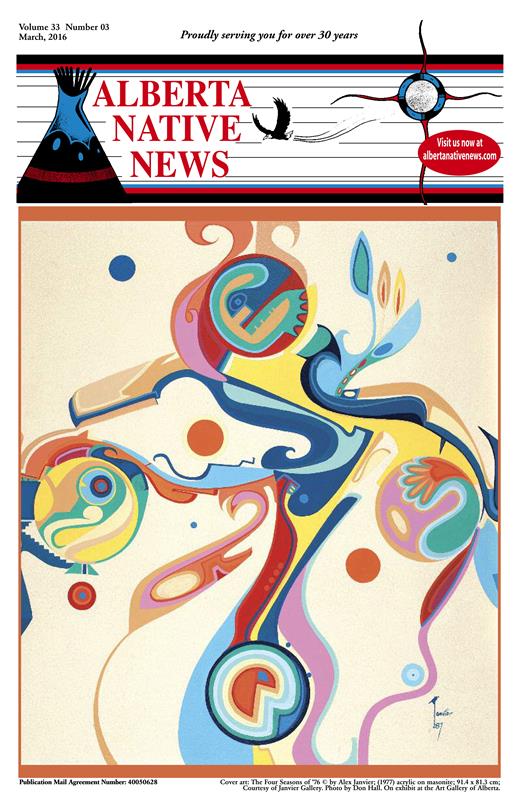
Alex Janvier and Joseph Sanchez were both in Edmonton during the early days of the exhibit, which launched at the AGA on March 5 this year. They were joined by curator Michelle LaVallee, an Anishinaabe woman who works full time as the Curator of the MacKenzie Art Gallery in Regina, Saskatchewan. She has not only accompanied the exhibit since 2013 in cities that include Kelowna, Kleinberg, Windsor and Winnipeg, she has been with the project since the beginning, including the early meetings nearly a decade ago. Instrumental in launching the initiative and in bringing the project from the dream-stage to a reality, LaVallee has travelled extensively with the artists and has participated with them as they met and spoke with the large crowds who have attended the exhibition in cities across Canada.
“It has just been a wonderful experience, a once-in-a-lifetime opportunity,” noted LaVallee, who noted that “this particular exhibition took more than half a decade to organize; the magnitude of the project, reflected by the profoundness of the collection and the expertise of the seven contributing artists, is something that every Canadian can appreciate and admire.”
And many have. This is one exhibition of work that you just don’t want to miss.
“That is very true,” she said. “The work is definitely in the best-of-the-best category and everyone who has seen it has expressed their appreciation for the work. The artists who remain with us today have profound visions and they reflect those views and visions in the work they have created and still create to this day. I have been with Alex and Joseph in galleries across the country where we have helped to enlighten an ongoing generation of art lovers about the work that these outstanding artists, and those who have already passed on, have given to Canada.”
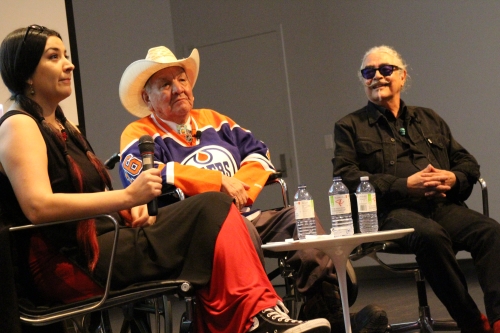
Curator Michelle LaVallee of Regina with renowned artists Alex Janvier and Joseph Sanchez at a lively public forum at the Art Gallery of Alberta on March 6. Photo by Terry Lusty
LaVallee and artists Alex Janvier and Joseph Sanchez attended forums across the country to discuss their experience in the creation of 7: Professional Native Indian Artists Inc. They have given talks, answered questions and delivered meaningful dialogue to the many thousands of people who’ve attended the exhibitions and the follow-up lectures that have accompanied them.
“During the 1970s,” explained LaVallee, “the group stimulated a new way of thinking about the lives and art of First Nations people. Inspired by the legacy of their ancestors, they translated a world of knowledge based on individual experience and cultural heritage. While their styles and techniques vary from artist to artist, a contemporary indigenous aesthetic is apparent in the vivid colours, dynamic forms, and non-European sensibility that pervades their work. Though their personal aspirations were diverse, their collective vision of PNIAI made them frontrunners in the development of contemporary Indigenous art.”
The exhibition has been very well received by audiences across Canada and that trend continued in Edmonton. The Professional Native Indian Artists Incorporation, better known as the Indian Group of Seven, was founded in 1973. The group comprised of seven professional First Nations artists, four of whom are no longer with us; only three remain alive and all three are still putting paint to canvas.
“The panel discussions have been particularly interesting and very successful everywhere we have been,” noted LaVallee, who complimented Edmontonians for “continuing that trend and for asking questions and participating in sessions hosted by herself as well as Janvier and Sanchez.
“Unfortunately Daphne Odjig, the initiator and inspirational leader of the Group of Seven could not join us; at 96 years of age travel has become difficult for her but she has sent her best wishes and will be pleased to know that her work is truly appreciated and loved by Canadians from one coast to the other.”
LaVallee travelled to southern British Columbia with Sanchez and Javier as the trio worked on the various exhibitions that were held across Canada these past three years.
“It was a great time,” she assured. “Daphne is a truly delightful lady who is still creating beautiful art. Together we sat, while I mainly listened, and the stories they told and memories they shared were something to behold. The laughed and joked and spoke about those who have since passed on; every member of the Group of Seven had a role to play, a vision to enhance, an idea to express, a story to tell. They did that and they did it in style that may never be matched. The entire journey has been a wonderful part of my life and one that I will never, ever forget.”
The group met with and spoke to Canadians at every venue. They weren’t disapointed.
The panel discussions have been wonderful, issued LaVallee. “I am pleased to note that art lovers from across the country have expressed their delight with the show and the artists they spoken with during their travels across Canada. The panel discussions were successful, in part because everyone wants to meet the artists, but also because of the fortitude they carried with them in their quest to have the artwork created by Indigenous peoples recognized for what it is, beautiful, meaningful, creative art.”
One of the things that LaVallee said that particularly surprised some of the guests attending the panel sessions was “the that the artists are very approachable, very friendly, forthright and willing to share their stories and experiences. Knowing them as I do, these things didn’t come as a surprise because that’s just the way they are. They love to talk about their culture, their traditions and their artwork and I urge every reader to embrace the opportunity, should it arise, to stand up, introduce yourself, and shake hands with these outstanding people whenever and wherever you come across them. You will not be disappointed. Unfortunately, many of the topics and issues these artists faced 40 years ago are still prevalent today. The work they’ve created and continue to create speaks to some of these issues and thus their work remains a viable part of who they are, who we are and what Canada and Canadians need to do to rectify the wrongs of the past through positive change, better understanding and total acceptance of who we all are as proud Canadians.”
For more information see the AGA website at: youraga.com

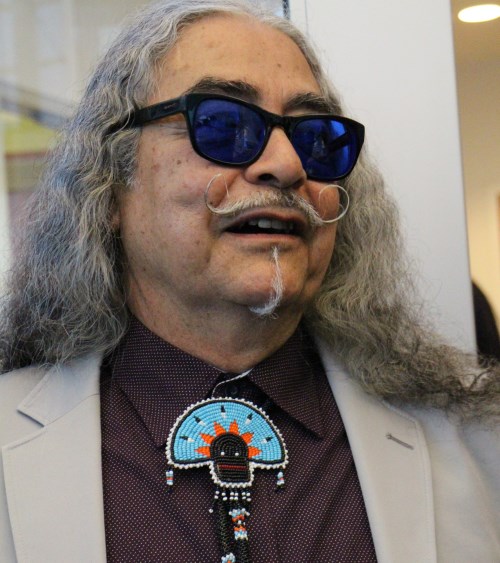
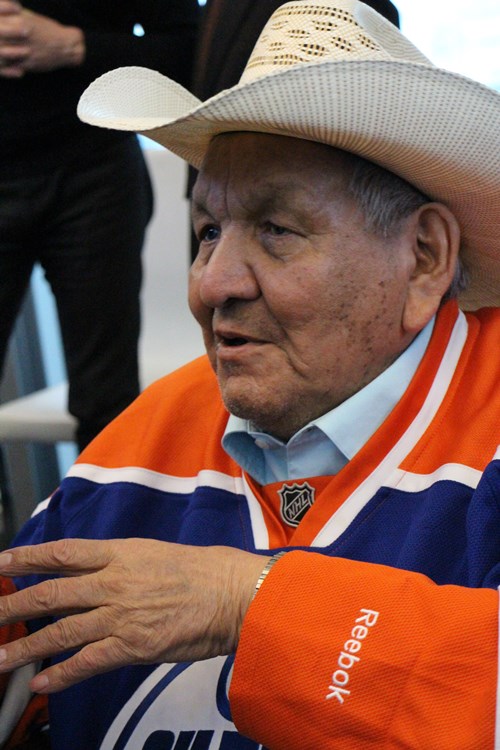

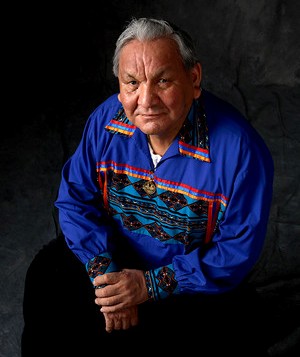
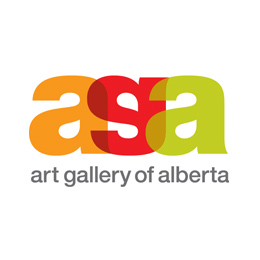

Be the first to comment on "Feature artist for March 2016: Alex Janvier"